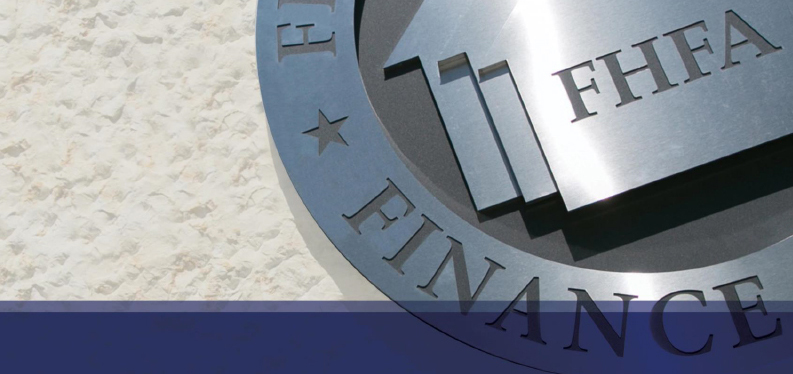
FHFA Sets Final Rule for GSE Regulatory Capital Framework

The Federal Housing Finance Agency yesterday released a final rule that establishes a new regulatory capital framework for Fannie Mae and Freddie Mac.
FHFA said the final rule is substantively similar to its June proposed rule in terms of overall structure and approach. As required by the proposed rule, an Enterprise must maintain tier 1 capital in excess of 4.0 percent to avoid restrictions on capital distributions and discretionary bonuses.
In a statement, the Mortgage Bankers Association expressed disappointment with the final rule, saying its impact on consumers remains uncertain and calling on FHFA to undertake a quantitative study on the cost and availability of credit to consumers.
FHFA made three “notable” changes to the risk-based capital requirements, in addition to a number of other refinements. The notable changes include:
- Increased capital relief for credit risk transfers (CRT);
- Reduced capital requirements for single-family mortgage exposures subject to COVID-19 related forbearance; and
- Increased the exposure level risk-weight floor for single-family and multifamily mortgage exposures to 20 percent.
FHFA Director Mark Calabria said the enhancements in the final rule ensure each Enterprise’s safety and soundness and its ability to fulfill its statutory mission across the economic cycle, particularly during periods of financial stress.
“Fannie Mae and Freddie Mac have a mission to serve the American housing market during good times and bad. After considering all the comments on the proposed rule, and the Financial Stability Oversight Council’s review of the secondary mortgage market, Calabria said. “FHFA is confident that the final rule puts Fannie Mae and Freddie Mac on a path toward a sound capital footing. Increased capital means that they can serve all Americans, especially low- and moderate-income families, throughout the economic cycle. The final rule is another milestone necessary for responsibly ending the conservatorships.”
It remains uncertain when and how the rule will move forward. Calabria, a strong proponent of ending the Fannie Mae/Freddie Mac conservatorship, faces political uncertainty when the Biden Administration takes power in January. And while the final rule creates a path to allow Fannie Mae and Freddie Mac to once again retain all of its earnings, any efforts to allow the GSEs to go private is likely to face opposition from Biden and House and Senate Democrats.
Mortgage Bankers Association President & CEO Robert Broeksmit, CMB, issued the following statement in response to the capital rule announcement:
“MBA appreciates that FHFA released a finalized capital framework for the GSEs after a lengthy process of reviewing comments from various industry stakeholders and regulatory agencies. While a revised capital framework for the GSEs is a necessary step to ensure their safety and soundness, we are disappointed with several aspects of the final rule, including FHFA’s response to industry comments along several lines.
“Despite the concerns we expressed that the high levels of required capital in the proposed rule would adversely impact the cost and availability of credit for consumers, the final rule actually increases the total capital requirement for the GSEs. While FHFA took modest steps to recognize the value of credit risk transfers, these steps appear to be more than offset by other changes that increase the risk-based capital requirements relative to FHFA’s earlier proposal. We also remain concerned that the high leverage ratio requirements will be binding more frequently than is appropriate and will further contribute to negative impacts on consumers.
“Given that this rule will affect both the cost and availability of mortgage credit for borrowers, we believe FHFA should conduct a quantitative impact study to determine the full impact of the rule. QIS reports have been critical to properly calibrating other major capital rules undertaken by the banking agencies and should be a part of this process, given the impact on the $11 trillion housing finance market. We will continue to analyze this rule and provide additional details on its expected impact on various mortgage market participants. We will also continue to advocate for important market conduct reforms to be put in place prior to the GSEs’ eventual exits from conservatorship.”
The final rule makes certain changes to the proposed rule published in the Federal Register on June 30. That proposed rule was a re-proposal of the regulatory capital framework proposed in 2018. That proposal was based on the Conservatorship Capital Framework that had been implemented by FHFA in 2017.
FHFA said the final rule fulfills Congress’s Housing and Economic Recovery Act of 2008 mandate that it establish risk-based capital requirements for the Enterprises. FHFA received and reviewed 128 comments. The final rule is intended to ensure the safety and soundness of the Enterprises by increasing the quantity and quality of the Enterprises’ regulatory capital and reducing the pro-cyclicality of the aggregate capital requirements.
In conjunction with the final rule, FHFA also released a data supplement to the expanded-data FHFA House Price Index. The FHFA HPI will now provide a national expanded-data series beginning in first-quarter 1975. This extends the available index that began in first-quarter 1991.
The augmented data series is provided in support of the final rule, which includes a countercyclical adjustment to single-family mortgage exposures based on the deviation between the inflation adjusted level of the index and an estimated long-run trend. The final rule uses the updated expanded-data FHFA HPI as the basis for the countercyclical adjustment.
